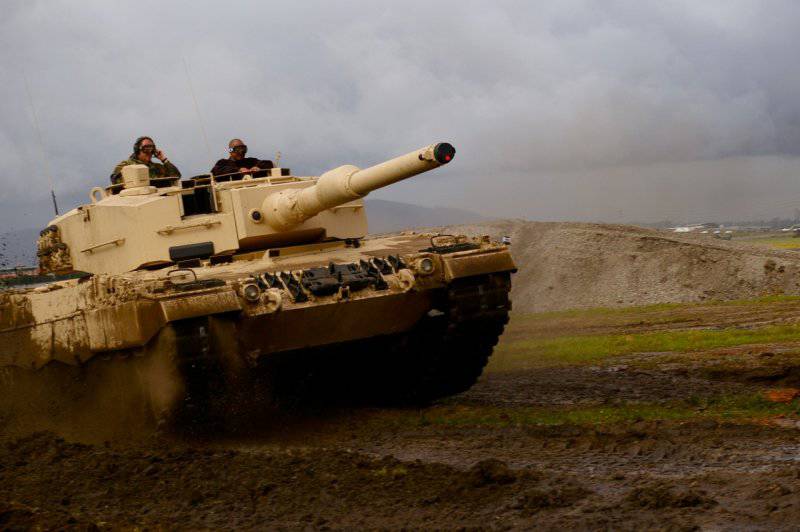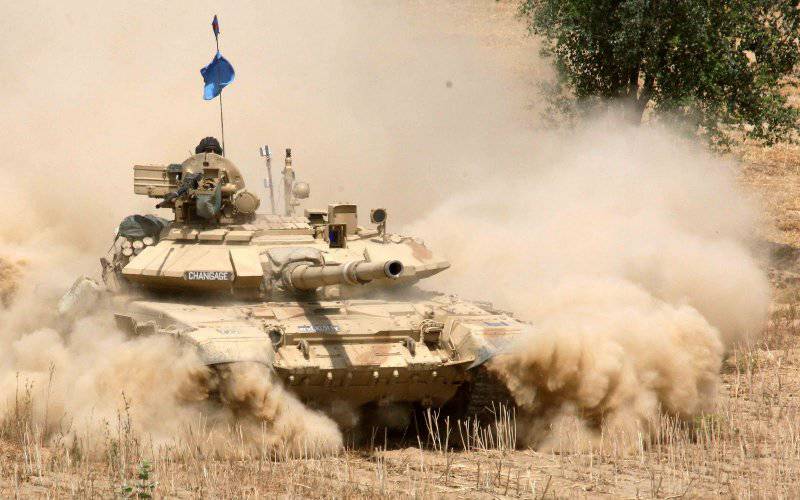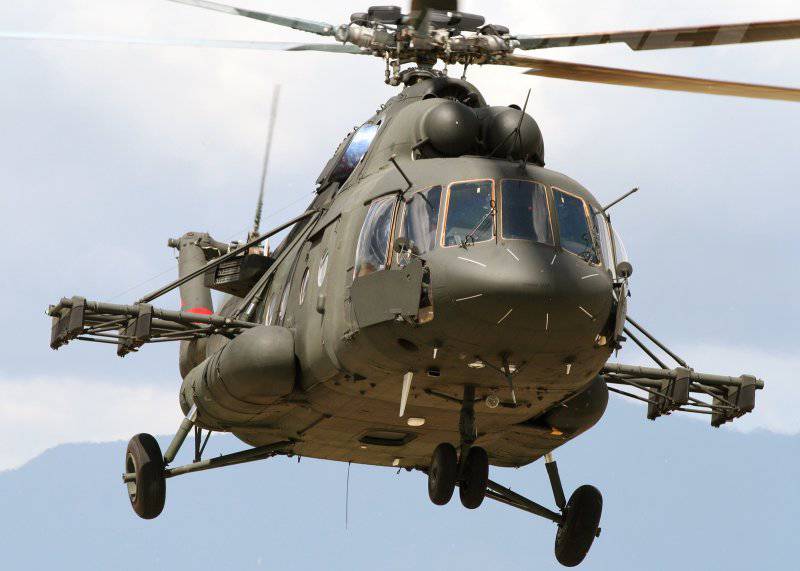SIPRI studied the arms market in 2009-2013
Common numbers
The largest suppliers of weapons in the period under review were the United States with 29% of the total supply. Russia ranked second in the overall ranking (27%). Third to fifth places were taken by Germany (7%), China (6%) and France (5%). It is noted that these five countries account for three-quarters of the total global supply of arms and military equipment. The first two countries of the rating (USA and Russia), in turn, provide 56% of the world market. Specialists of the SIPRI Institute note that Russia, despite the problems of the past decades, has been able to maintain its production potential and is constantly increasing the volumes of military-technical cooperation with other countries. So, from 2009 to 2013, Russian enterprises transferred weapons and equipment to the armies of 52 states.
India has become the largest importer of weapons over the past five years. In comparison with the previous “five-year period”, this state increased the volume of purchases by 111%. Due to this, the share of Indian imports doubled and reached 14% of the total market. The second and third places in terms of purchases are Pakistan and China, whose market share does not exceed 4-5 percent. It should be noted that in the 2009-2013 years, Pakistan showed an even greater increase in imports than India. During this period, Pakistani costs for imported products increased by 119%.
For ease of comparison, the countries of the world were divided into five groups according to their geographical location: Asia and Oceania, Africa, the Middle East, Europe, and North and South America. As in the 2004-2008 years, Asia and Oceania occupy the first place in the import of weapons and military equipment. At the same time, over the past five years, the share of Asia and Oceania in world imports has grown from 40 to 47 percent. The second place is occupied by the Middle East with 19% of world purchases. The top three import regions are Europe, which accounted for 14% of all purchases. Interestingly, in the previous five years, the shares of the Middle East and Europe were equal - by 21%. Two Americas and Africa in 2008-2013 made only 10 and 9 percent purchases, respectively. In the case of North and South America, there is a slight decrease in the share (total by 1%), and Africa, in turn, increased imports by 2 percent.
Exporting countries
The largest exporter of weapons and military equipment is still the United States. This country alone spent 29% of all global supplies for the period in question. Compared to the 2004-2008 over the years, the volume of US military exports increased by 11%. At the same time, however, the US share in the global market declined by 1%.
The basis of the US military export steel aircraft. More than 250 aircraft have been delivered or ordered from the United States over the past five years. This technique accounted for 61% of US exports. In the future, a large share of the aircraft in the export structure should remain, which will contribute to the latest fighters Lockheed Martin F-35 Lightning II. Different countries intend to acquire a large number of such aircraft, having a fairly high price. It is the combination of the quantity and price of this technology that should affect the structure of American military exports.
An important item of US revenue is the delivery of various air defense systems. Over the past five years, the United States has transferred such products to Germany, Japan, the Netherlands, Taiwan and the United Arab Emirates. In addition, contracts were signed for the supply of similar equipment to Kuwait, Saudi Arabia and South Korea.
The share of Russian supplies in the total market structure in 2009-2013 increased to 27%. The growth in comparison with the previous five-year period was 28%. In the past five years, Russia has been selling weapons and military equipment to 52 countries, but almost two-thirds of exports are intended for only three countries. India accounted for 38% of all Russian supplies, the share of Chinese purchases equals 12%, the share of Algeria - 11%. Overall, 65% of Russian exports accounted for Asia and Oceania. 14% products went to Africa, 10% - to the Middle East.
Over five years, about 220 aircraft of various types were built or contracted, which accounted for 43% of the total Russian military exports. In addition, in the 2009-2013 years, Russia has become the world's largest supplier of warships and boats, occupying 27% of this market. The most notable project of this kind was the modernization of the aircraft carrier Vikramaditya, transferred to the Indian armed forces last year.
In the 2009-2013 years, as in the previous five year period, Germany retained its third place in the ranking of the largest suppliers of weapons and equipment. The share of the German defense industry in the global market was 7%, but sales fell by 24%. The largest buyer of military equipment and weapons produced in Germany, became the United States (10% of German exports). The second and third places were taken by Greece and Israel, the shares of these countries are slightly more than 8%. European countries jointly acquired 32% of German export products. The share of Asia and Oceania reached 29%, North and South Americas - 22%.
Germany remains the largest seller of submarines. From 2009 to 2013, eight submarines for five countries were built in Germany. At the end of last year, German industry had orders for the supply of another 23 submarines. An equally important export item is Tanks. Over the past five years, Germany has sold 650 Leopard 2 tanks of various modifications to seven countries (two of which are outside Europe). In terms of the number of tanks sold, Germany in the period under review lost only to Russia.
A uniquely high growth rate was demonstrated by Chinese military exports. Over the 2009-2013 years, compared with the previous five-year plan, the volume of supplies of Chinese-made equipment and weapons grew by 212%. China’s global market share increased from 2 to 6%. In recent years, China has supplied weapons and military equipment to 35 countries. These were mainly small and not rich states of Asia and Africa. So, most of the Chinese products sold abroad went to Pakistan (47%). 13% of export equipment and weapons went to Bangladesh, Myanmar’s share was 12%.
China is actively developing its industry and developing new technologies. It was this that enabled him in a relatively short time, not only to re-equip the army, but also to increase his share in the international market of weapons and equipment. It is noteworthy that China is constantly expanding the range of countries purchasing its products. For example, last year, Turkey chose the Chinese anti-aircraft missile systems HQ-9, preferring their development of several other countries.
The share of France in the international market of weapons and equipment in 2009-2013 was 5%. For several reasons, French exports have declined: compared to 2004-2008 over the years, they have fallen by about 30%. Nevertheless, even having lost 4% of the world market, France managed to retain the fifth place in the ranking of the largest exporters. Over the past five years, French enterprises have executed contracts with 69 countries. Supply volumes were distributed as follows: countries in Asia and Oceania acquired 42% French export equipment and weapons, Europe bought 19%, Africa - 15%, Middle East - 12%, North and South America - 11%. The most active buyer of French products was China (13%). Morocco and Singapore acquired 11 and 10 percent of French weapons and equipment, respectively.
Broad military-technical ties of France and China are primarily due to the sale of licenses for the construction of helicopters and the delivery of various electronic equipment. In the very near future, India should be one of the main buyers of French-made equipment. These consequences should lead to the signing and execution of contracts for the supply of 49 fighters Dassault Mirage 2000-5, 126 Dassault Rafale and 6 submarines of the project Scorpene.
In the sixth place in the ranking of exporting countries for 2009-2013 years is the United Kingdom with a market share of 4%. An interesting fact is that in the period from 2004 to 2008, the British market share was exactly the same. 42% of its exports this country shipped to Saudi Arabia, 18% to the USA and 11% to India. The seventh was Spain, whose share increased to 3% (2% in the previous five years). The main buyer of Spanish equipment and weapons was Norway (21%), second and third places were left behind Australia (12%) and Venezuela (8%). Ukraine, which ranked eighth in the ranking of suppliers, also increased its share from 2% to 3%. 21% of Ukrainian products went to China, 8% went to Pakistan, and 7% were sold to Russia. Italy ranked ninth in the overall ranking with three percent of the global market. The main buyer of its products was India (10%). It is followed by the UAE (9%) and the US (8%). The top ten exporters are behind Israel with two percent of the total market. 33% of Israeli equipment and weapons were sold to India, 13% to Turkey, 9% to Colombia.
Importing countries
The largest buyer of foreign arms and military equipment in 2009-2013 for years was India. Compared to the previous five-year period, its share of purchases has doubled and reached 14%. The main foreign supplier of military products for the Indian armed forces was Russia, which accounted for 75% of all orders. The second largest supplier is the USA with 7%. The third place in terms of India’s sales was taken by Israel with a share of 6%. It is noteworthy that contracts with India make up a third of Israeli military exports. For India, in turn, they are only a few percent.
The main item of procurement of weapons and equipment in India are combat aircraft. Over the past five years, the Indian Air Force received 90 from the ordered 220 more than Su-30MKI Russian-made fighter jets, as well as 27 from 45 MiG-29K. In addition, deliveries of the 62 Russian MiG-29CMT and 49 French Dassault Mirage 2000-5 fighters will begin in the future. The result of a recent tender should be the delivery of Dassault Rafale 126 fighter jets. In the future delivery of the export version of the Russian T-50 aircraft (FGFA program) is possible. The total number of such fighters should exceed 100-120 units.
The number of countries buying weapons and equipment abroad is significantly higher than the number of manufacturers of such products. Because of this, in particular, the gaps between importers are noticeably smaller than in the case of exporters. So, China, which ranks second among buyers of foreign equipment and weapons in 2009-2013, acquired only 5% of the total export military products. At the same time, its figures dropped noticeably: in 2004-2008, China accounted for 11% of all world purchases. The main supplier of weapons and military equipment to China is Russia (64% of all Chinese purchases). France is in second place with 15%, and the top three foreign suppliers of the Chinese armed forces are closed by Ukraine with 11% of contracts.
The third in the ranking of importing countries was Pakistan. This country is constantly increasing defense spending, so that the total volume of import contracts over the past five years by 119% exceeded that of the previous five-year plan. As a result, Pakistan’s share in global purchases of weapons and equipment has increased from two to five percent. The main seller working with Pakistan is China. From 2009 to 2013, China’s share in Pakistan’s overseas purchases was 54%. The second place was left for the United States, which supplied 27% of all imported products. Pakistan’s third largest partner is Sweden (6%).
In fourth place among the buyers of weapons and equipment with four percent of total world procurement entrenched the United Arab Emirates. In recent years, this state is not in a hurry to increase defense spending, due to which its share in procurement over the past five years has dropped from 6% to 4%. 60% of imports to the UAE armed forces are carried out by the United States. On the Russian and French weapons and military equipment accounted for only 12 and 8 percent, respectively.
Saudi Arabia, thanks to a gradual increase in defense spending, was able to climb into fifth place among the countries importing weapons and equipment. Its share in the global import of such products exceeded 4%. For comparison, in the 2004-2008 years, this figure was half that. 44% of foreign-made military products come to Saudi Arabia from the UK. 29% of imports are accounted for by American equipment and weapons, and France is in third place with 6%.
In sixth place in the ranking of importers according to SIPRI, behind Saudi Arabia, are the United States. The United States slightly increased its purchases of foreign equipment and weapons: in 2004-2008, they accounted for about three percent of world imports, in 2009-2013 - 4%. The United States buys the necessary equipment, weapons or equipment from several friendly states, and the volume of cooperation with different countries is not very different. Thus, the United Kingdom supplied 19% of all US imports, while Germany and Canada accounted for 18 and 14 percent, respectively.
4% of the total world procurement of equipment and weapons led Australia to seventh place in the ranking. Most of these products (76%) come to Australia from the United States. In addition, Spain (10%) and France (7%) are among the top three Australian suppliers. The eighth place in the list of importers is South Korea with 4% of purchases. 80% of weapons and military equipment that the state receives from the United States. In addition, attention is the supply from Germany (13%) and France (3%).
The ninth country in terms of purchases of foreign products - Singapore. Without a developed defense industry, this city-state is forced to actively buy weapons and equipment abroad. Economic opportunities allowed Singapore to increase its share in world procurement from 2% (2004-2008 years) to 3% (2009-2013 years). Similarly, the share of purchases of the country from the tenth place - Algeria increased. The vast majority of imported military products (91%) this North African state receives from Russia. The first and second places are separated by a colossal gap. For example, France supplied only 3% to Algeria, and the UK only 2% of the total number of imported weapons and equipment.
Arms Market and Crises
Some recent events may influence or have already affected the supply of weapons and military equipment. For example, because of last year’s crisis in Egypt, the United States decided to suspend the implementation of existing treaties with this country. Because of this, supplies of previously ordered equipment were frozen: F-16 Fighting Falcon fighter jets, AH-64D Apache attack helicopters and M1A1 main tanks. The situation with the delivery of transport aircraft C-295 is the same: Spain has decided not to transfer them to the Egyptian military. At the same time, however, Russia has already transferred the ordered Mi-17В-5 helicopters to Egypt.
According to SIPRI, Russia for some time has not been able to transfer to Syria the previously ordered C-300PMU2 anti-aircraft missile systems and MiG-29 fighters.
Against the background of problems in other Middle Eastern countries, the situation in Iraq has stabilized. Official Baghdad received the opportunity to actively develop its armed forces. At the end of last year, the Iraqi military received the first Russian-made Mi-4 35 helicopters. In addition, deliveries of South Korean T-50IQ combat training aircraft and American F-16C fighters should begin in the near future.
Full report: http://books.sipri.org/files/FS/SIPRIFS1403.pdf



Information